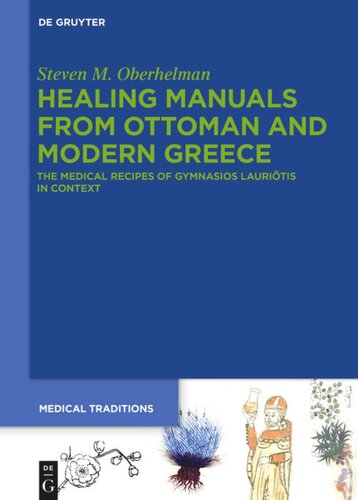

Most ebook files are in PDF format, so you can easily read them using various software such as Foxit Reader or directly on the Google Chrome browser.
Some ebook files are released by publishers in other formats such as .awz, .mobi, .epub, .fb2, etc. You may need to install specific software to read these formats on mobile/PC, such as Calibre.
Please read the tutorial at this link: https://ebookbell.com/faq
We offer FREE conversion to the popular formats you request; however, this may take some time. Therefore, right after payment, please email us, and we will try to provide the service as quickly as possible.
For some exceptional file formats or broken links (if any), please refrain from opening any disputes. Instead, email us first, and we will try to assist within a maximum of 6 hours.
EbookBell Team

4.4
92 reviewsThis book is a study of three iatrosofia (the notebooks of traditional healers) from the Ottoman and modern periods of Greece. The main text is a collection of the medical recipes of the monk Gymnasios Lauriōtis (b. 1858). Gymnasios had a working knowledge of over 2,000 plants and their use in medical treatments. Two earlier iatrosofia are used for parallels for Gymnasios’s recipes. One was written c. 1800 by a practical doctor near Khania, Crete, and illustrated by a second hand. The second iatrosofion dates to the sixteenth century; ascribed to a Meletios, the text survives in the Codex Vindobonensis gr. med. 53. The contents of these and other iatrosofia are predominantly medical, with many of the remedies taken from folk medicine, classical and Hellenistic pharmacological writers, and Galen.
The book opens with a biography of the monk Gymnasios and his recipes and then a description of the Cretan and Meletios iatrosofia. The iatrosophia, their role in Greek medical history, and the methods of healing are the subject of chapter 2. The Greek text of Gymnasios’s recipes are accompanied by a facing English translation. A commentary offers for each of Gymnasios’s recipes passages (translated into English) from the two other iatrosophia to serve as parallels, as well as an analysis of the pharmacopoeia in the medical texts. The book concludes with Greek and English indices of the material medica (plants, mineral, and animal substances) and the diseases, and then a general index.